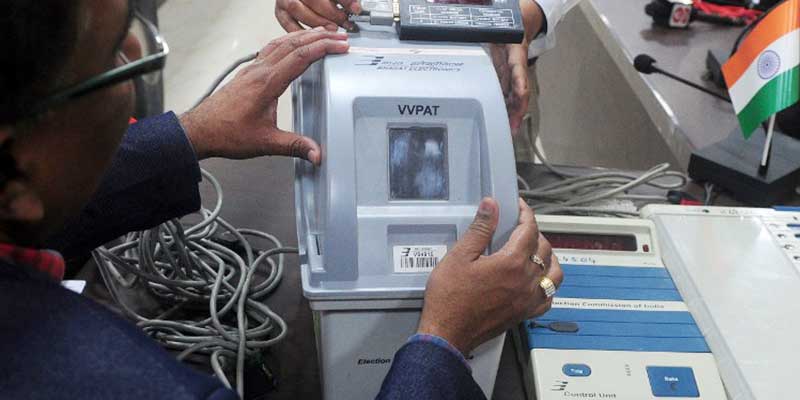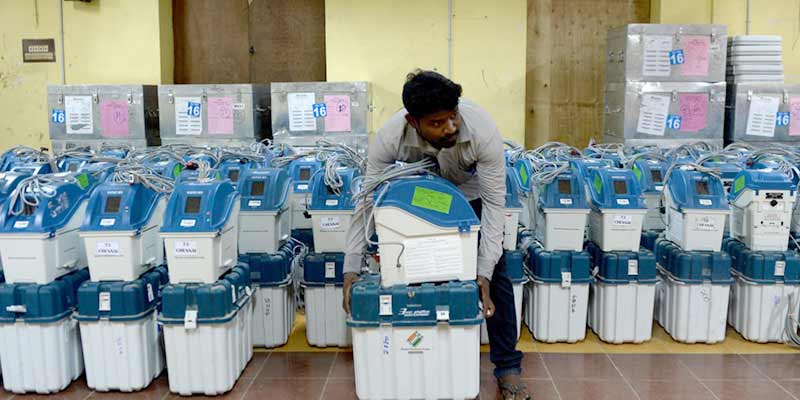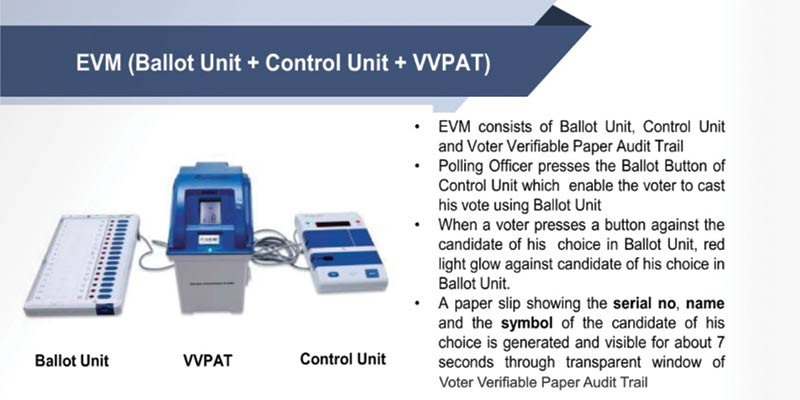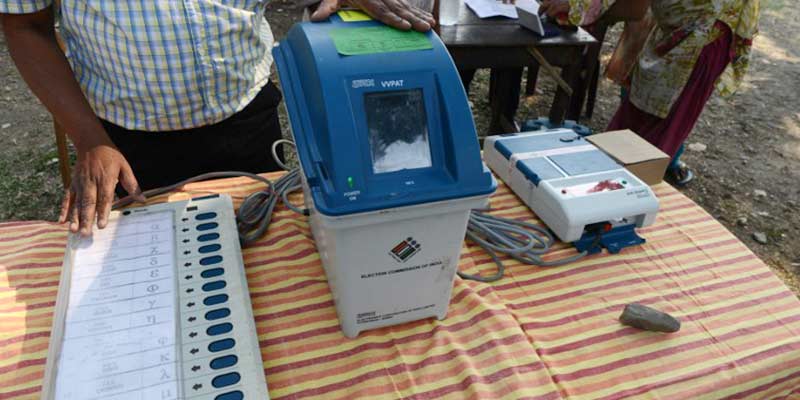- India
- Jan 06
Explainer - EVMs and VVPATs
• Dismissing Congress leader Jairam Ramesh’s concerns on the VVPATs, the Election Commission said that it raised no new assertions or reasonable and legitimate doubts which require further clarifications.
• Jairam Ramesh had written to the Election Commission requesting that a delegation of the Indian National Developmental Inclusive Alliance (INDIA) be given an appointment to put forth their views on the Voter Verifiable Paper Audit Trail (VVPAT) slips.
• The opposition alliance had at a meeting on December 19 voiced doubts about the integrity of functioning of the Electronic Voting Machines (EVMs) and wanted the VVPAT slips to be handed over to the voters, who could drop it in a separate box.
• The opposition alliance had also demanded 100 per cent matching of the slips and the EVMs.
Transition from paper ballot system to EVMs
• In the paper ballot system, the list of contesting candidates is printed on a paper (ballot paper) along with serial number, name and symbol of the candidates. There is a specific space allocated for each contesting candidate where a vote can be cast by voter by putting a mark.
• Thereafter, a voter needs to fold the ballot paper in a specified manner and to deposit in the ballot box.
• For counting votes obtained by that candidate, only correctly marked votes are counted.
Some of the major issues with ballot paper voting are that:
i) Many votes become invalid due to improper marking/ink smudging.
ii) Ballot boxes are also susceptible to “stuffing with spurious votes” by capturing the booth.
iii) Voting with pre-marked ballot papers.
iv) Manual counting of votes is prone to errors and takes a lot of days.
• The idea of Electronic Voting Machine (EVM) was first conceived in 1977.
• The Election Commission assigned the Electronics Corporation of India Ltd (ECIL), Hyderabad the task to design and develop it. In 1979 a prototype was developed, which was demonstrated by the Election Commission before the representatives of political parties on August 6, 1980.
• The Bharat Electronic Ltd (BEL), Bangalore was co-opted along with ECIL to manufacture EVMs once a broad consensus was reached on its introduction.
• EVMs were used for the first time in Paravoor assembly constituency in Ernakulam district during the elections to the Kerala Legislative Assembly held in May 1982. The EVMs were used only in 50 booths out of the total 123 booths in Paravoor.
• However, the absence of a specific law prescribing its use led to the Supreme Court striking down that election.
• Subsequently, in 1989, the Parliament amended the Representation of the People Act, 1951 to create a provision for the use of EVMs in the elections.
• A general consensus on its introduction could be reached only in 1998 and these were used in 25 Legislative Assembly constituencies spread across three states of Madhya Pradesh, Rajasthan and Delhi.
• The entire state of Goa voted with EVMs to elect a new state Assembly in June 1999.
• Its use was further expanded in 1999 to 45 Parliamentary Constituencies.
• In the state Assembly elections held in May 2001, in the states of Tamil Nadu, Kerala, Puducherry and West Bengal, EVMs were used in all the Assembly Constituencies.
• In 2004, in the General Election to the Lok Sabha, the EVMs (more than one million) were used in all Parliamentary Constituencies in the country.
How the EVM works?
• Electronic Voting Machine (EVM) is a device used to electronically record and count votes cast in elections.
• The Indian EVM system is also termed as ECI-EVM, meaning an EVM specifically designed, manufactured and used for elections as per election procedure and rules framed by Election Commission of India.
• EVM consists of Ballot Unit (BU), Control Unit (CU) and the Voter Verifiable Paper Audit Trail (VVPAT).
• EVMs come under the overall category of Direct Recording Electronic voting machine systems, which is one of the many voting methodologies available worldwide.
• In the ECI-EVM system of voting, the Control Unit is placed with the Presiding Officer and the Ballot Unit(s) and VVPAT are placed inside the Voting Compartment.
• Instead of issuing a ballot paper, the Polling Officer in-charge of the Control Unit releases the electronic ballot by pressing the “Ballot Button” on the Control Unit. This enables the voter to cast his/her vote by pressing the “blue button” (Candidate button) on the Ballot Unit against the candidate of his/her choice.
• When the voter presses a button against the candidate of his/her choice on the Ballot Unit, a red LED glows against the chosen candidate’s button on BU.
• A paper slip showing the serial number, name and the symbol of the candidate of his/her choice is generated and is visible for about seven seconds through the transparent window of VVPAT. Hence the voter is able to see the “printed slip” and verify that vote is cast as per his/her choice.
• Thereafter, the printed paper slip gets cut automatically and stored in a sealed drop box of VVPAT. A loud beep is heard from the Control Unit which confirms that the vote is registered successfully.
• EVMs and VVPATs do not require any external power supply. EVM and VVPAT run on their own battery/ power-packs.
When was VVPAT introduced?
• The government of India notified the amended Conduct of Elections Rules, 1961 on August 14, 2013, enabling the Commission to use VVPAT with EVMs.
• Voter Verifiable Paper Audit Trail (VVPAT) was first introduced on September 4, 2013 in the byelection for Noksen Assembly Constituency of Nagaland.
• VVPAT is an independent system attached with the EVMs that allows the voters to verify that their votes are cast as intended. When a vote is cast, a slip is printed on the VVPAT printer containing the serial number, name and symbol of the candidate and remains exposed through a transparent window for seven seconds. Thereafter, this printed slip automatically gets cut and falls in a sealed drop box of the VVPAT.
• The voter cannot take it home.
• The specially designed thermal paper used in the VVPAT is capable of retaining the printout for more than five years, so that the printout is available for manual verification by the court,if required in need of a dispute for cross checking the counting of votes cast.
• In April 2019, the Supreme Court directed the Election Commission to verify VVPAT paper slips from randomly selected five polling stations in every constituency.
Manorama Yearbook app is now available on Google Play Store and iOS App Store




